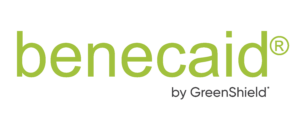Employee and Family Assistance Programs (EFAPs) are launched for a variety of reasons, from serving as employee support, to assisting with attraction and retention of key talent. However, when it’s time to review your client’s overall health benefits costs, determining the ROI from their EFAP can be helpful.
EFAPs are intended to help employees deal with personal problems that impact their work performance. Healthier, happier employees are in a better position to fulfill their responsibilities and balance their personal and professional lives. While this sounds good in theory, is there a way to measure if it’s working?
There are two key metrics to focus on: reduced time away from work and lower benefits costs.
Absenteeism
Employee absence is not always due to a runny nose or sore throat. Quite often, it can be attributed to family obligations or stress. In any given week, half a million employed Canadians are not able to work because of mental health issues. An Employee and Family Assistance Program (EFAP) can provide valuable support for employees so they can properly address issues like addiction, depression or abuse. With support, employees are more likely to work harder and be present in their place of work.
A Morneau Shepell study found that employees who take advantage of their workplace EFAP reported a 35.9% increase in productive work hours. Plus, 46% of employees stated that without the support of their EFAP, they would have lost time from work, and one-third of those employees said they would have been off work for more than 20 days.
How does this translate into an ROI for your client?
According to data from the Conference Board of Canada, the average absence rate was 8.9 days per full-time employee in 2015. However, less than half of Canadian organizations track employee absences or the reasons behind them. Tracking and monitoring trends in absenteeism are important for clients who are serious about monitoring the success of their EFAP.
There are many affordable HR platforms available today that can help your clients not only track important HR data, but also save time when it comes to every day HR tasks.
Lower benefits costs
The success of an EFAP can also be seen through lower benefits costs. Specifically, fewer disability claims and a reduction in prescription drug costs for mental health and emotional issues. Ask insurance carriers or Third-Party Administrators for a breakdown of claims by DIN (drug identification number) to spot trends in drug classifications.
Benecaid works with Shepell and other providers to offer clients industry-leading Employee and Family Assistance Programs (EFAPs). For more information on our programs or for pricing, please contact your Benecaid Executive Benefits Consultant or send an email to advisors@benecaid.com.



Comments are closed.